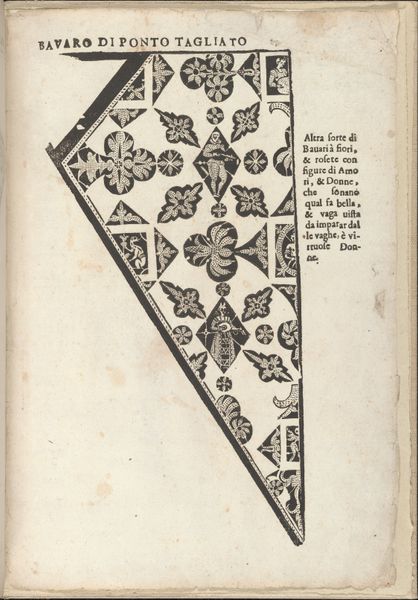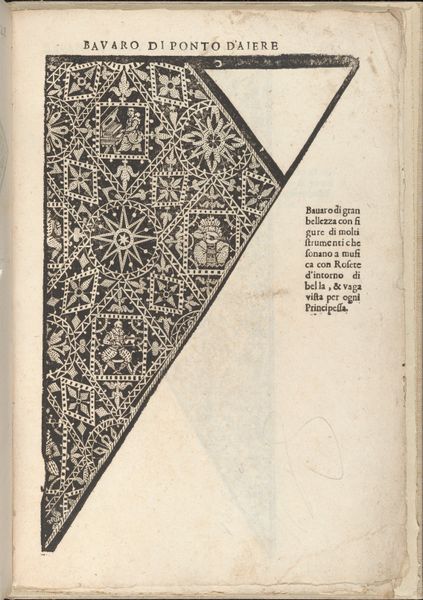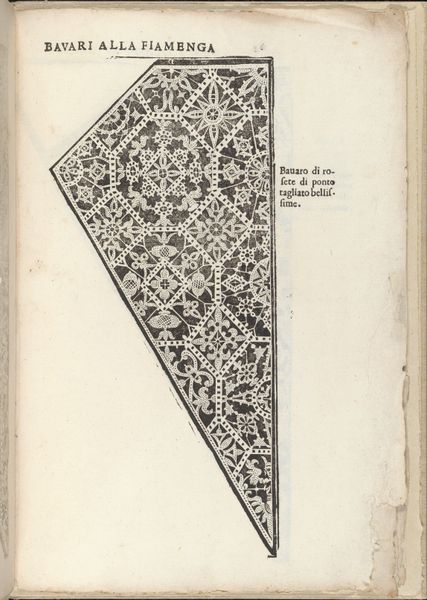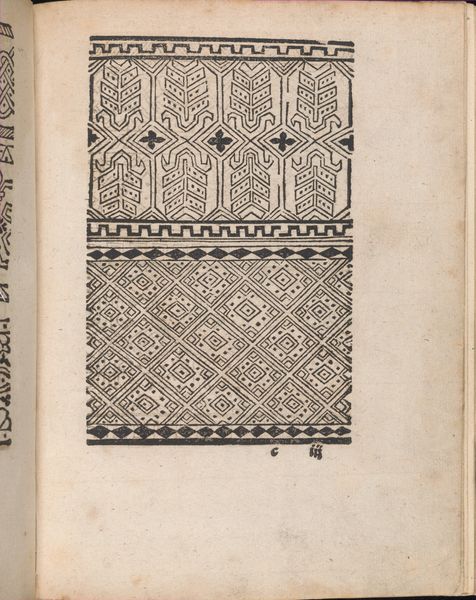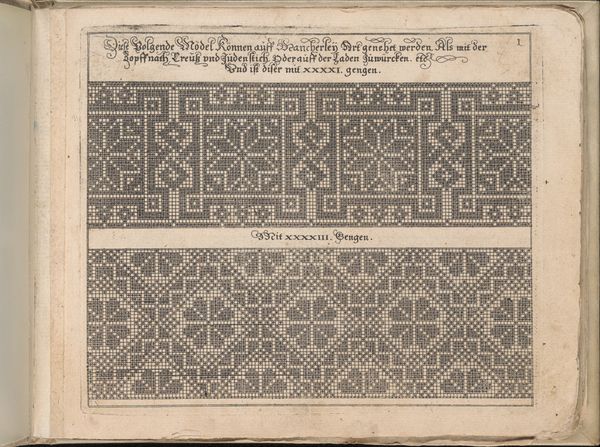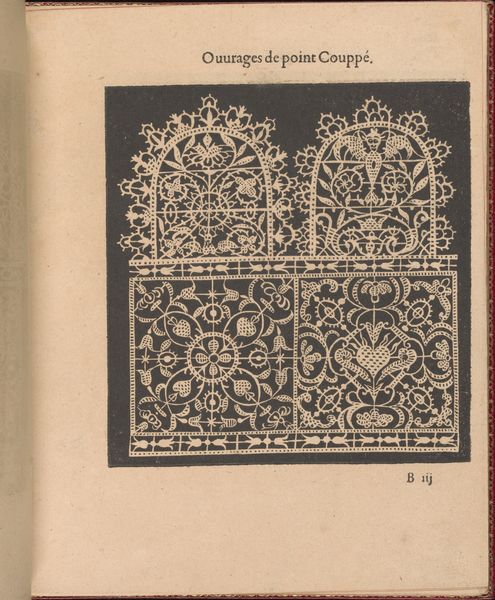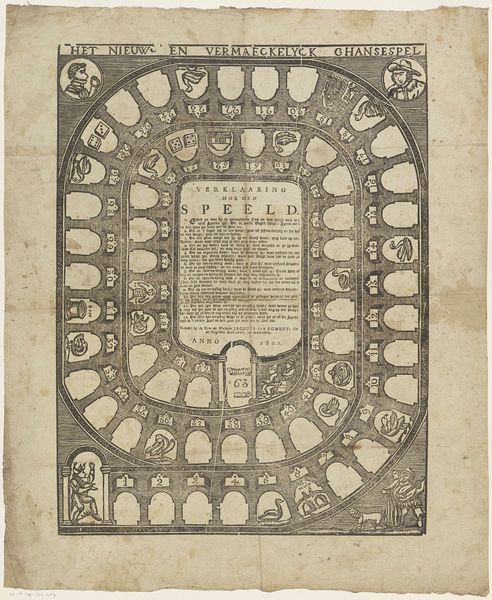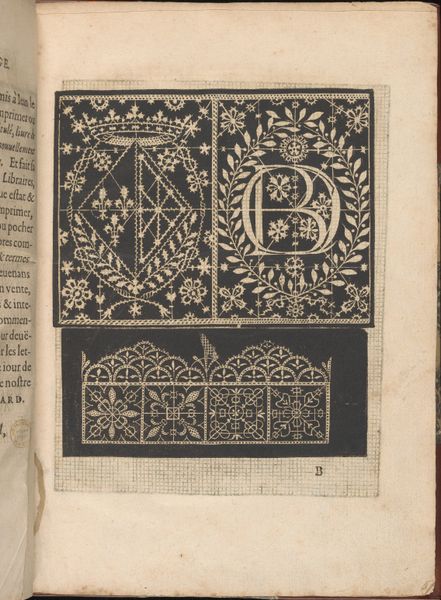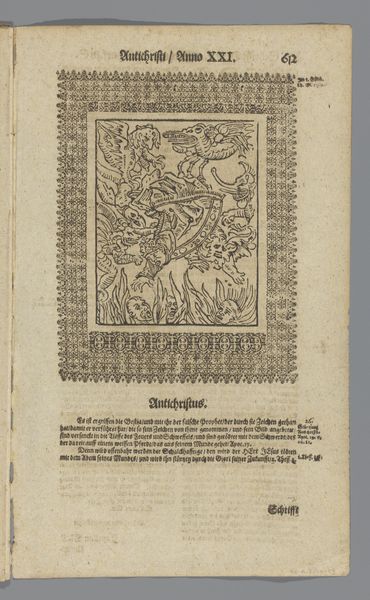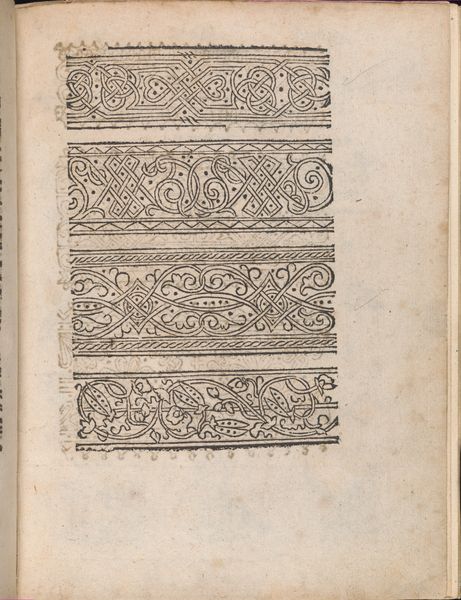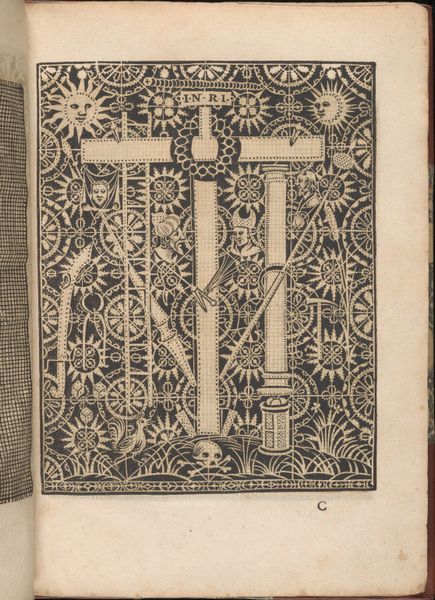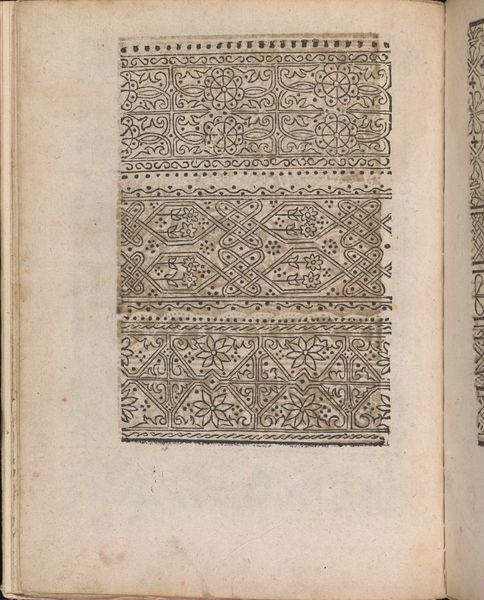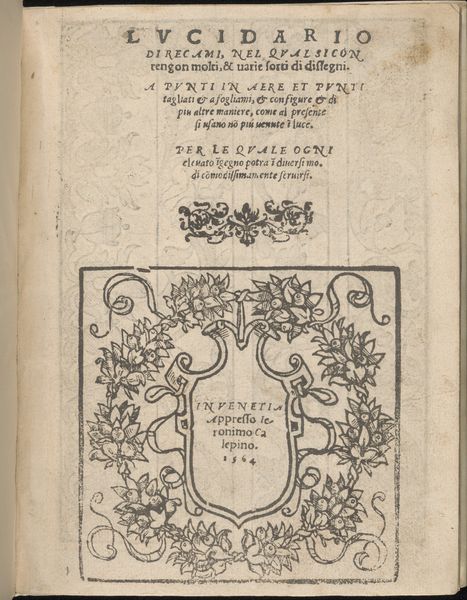
Ornamento nobile...Fatta da Lucretia Romana (Libro V of the Corona), page 2 (recto) 1620
0:00
0:00
drawing, ornament, print, engraving
#
drawing
#
aged paper
#
ornament
#
toned paper
# print
#
book
#
old engraving style
#
sketch book
#
11_renaissance
#
personal sketchbook
#
pen-ink sketch
#
ink colored
#
men
#
pen work
#
sketchbook drawing
#
sketchbook art
#
engraving
Dimensions: Overall: 12 3/16 x 8 1/4 in. (31 x 21 cm)
Copyright: Public Domain
This page from Cesare Vecellio’s “Corona,” created in 16th-century Venice, immediately strikes us with its intricate geometric patterning, a black and white field teeming with ornamental forms. The density of the print creates a rich texture, almost overwhelming in its detail, yet held in check by its underlying structure. Consider how Vecellio employs a visual language rooted in both geometry and natural forms. We see stylized flowers and vases woven into a latticework of diamonds and squares. This interplay suggests a semiotic system where each motif acts as a signifier within a larger cultural code. The title itself indicates that these patterns are meant to be ornamental for women, aligning the artwork with the cultural ideals of beauty and adornment of the time. The book engages the concept of "compartimenti bellissimi," beautiful compartments, which suggests a challenge to fixed meanings through new ways of thinking about space, perception, and representation. The function of ornament transcends mere aesthetics; it becomes a signifier of status, taste, and cultural identity within the Venetian society of Vecellio’s time.
Comments
No comments
Be the first to comment and join the conversation on the ultimate creative platform.
